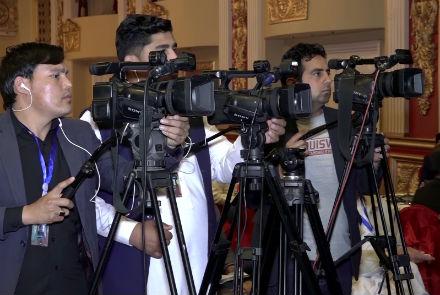An official of Ministry of Information and Culture said that at least 100 media outlets have canceled their licenses over the past two years as the World Press Freedom Day was marked in Kabul on Friday.
According to government statistics, there are 96 TV channels, 65 radio stations and 911 print media in Kabul, as well as 107 TV channels, 284 radio stations and 416 print media in other provinces. In total, there are 1,879 active media outlets in Afghanistan, the figures show.
A number of new media outlets have started operation in the same period, said Sayed Aqa Fazel Sancharaki, Deputy Minister of Information and Culture for Publications.
“No reporter has been jailed in the past 19 years,” Sancharaki said.
He said new mechanisms have been implemented for addressing media’s problems. “At least 1,500 cases of violence against journalists have been investigated and finalized through a joint committee of government and media has been formed in the last two years,” he added.
The freedom of the press has been one of the main achievements of the Afghan government following the fall of the Taliban regime in 2001. However, some reports said they are still faced with security threats, challenges in access to information and lack of a safe environment for their activities.
“Our biggest problem in journalistic activities is that sometimes government officials refuse to give us information,” said Nusrat Parsa, a reporter.
The index on press freedom released by Reporters Without Borders (RSF) on April 17 shows that the situation of media in Afghanistan has “worsened” as it has descended to 121 from 118 where it stood last year.
According to RSF, three journalists have been killed in Afghanistan this year.
The RSF says that for Afghanistan’s journalists, 2018 was the deadliest year since the fall of the Taliban regime in 2001.
A total of 15 journalists and media workers were killed in a series of bombings that began early in the year, nine of them in a single day, the RSF says in a report on its website.
“The Press Freedom Day is marked at a time that limitations from all parties still continue to be imposed on media,” said Hamid Mayar, a reporter.
“Reporters want to have access to the information they need but sometimes the face with problems in this respect,” said Ainuddin Bahaduri, Chairman of Access to Information Oversight Commission.
One reporter, Fereshta, said the press freedom should be a red line in the peace talks with the Taliban as the peace efforts continue at national and international levels.


